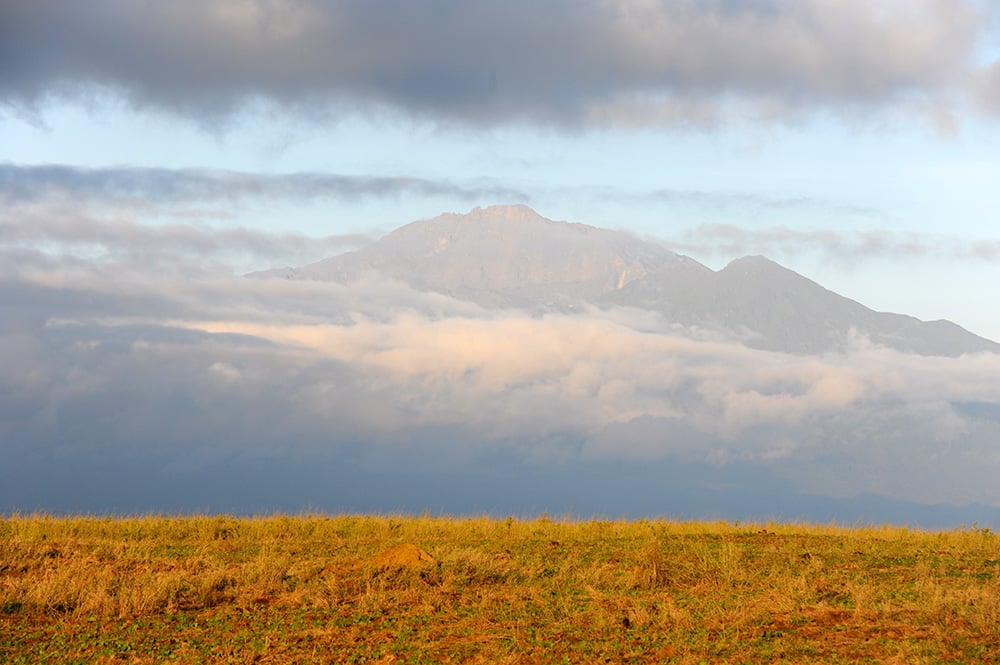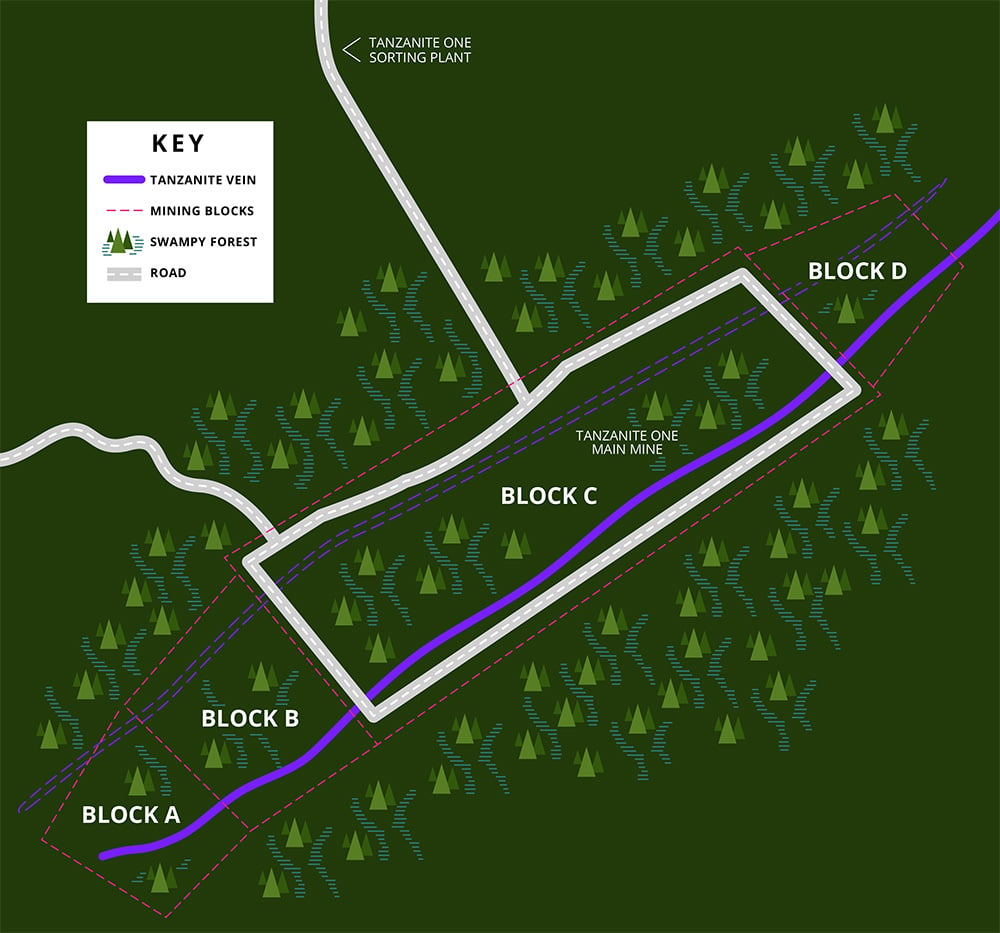It was sheer serendipity that brought a tailor to a remote area in Arusha, northern Tanzania in 1967 - and on July 7th of that year, a once-in-a-lifetime discovery was made.
There are several different theories surrounding the discovery of Tanzanite, such as who actually found it and when. But, the account of Dr John Saul, the first geologist on the scene after the discovery, is the most plausible one by far.
A blue gem that's both stunning and rare, Tanzanite was the most important gemstone discovery since Alexandrite was first found in April 1834. The man who made the discovery truly changed the world, and it's a story we never tire of telling.
Manuel de Souza

Manuel de Souza was an Indian tailor who travelled the world prospecting for Gold and gemstones. Affectionately known as ‘Mad Manuel’, he mended clothes to pay his way across Africa - usually on foot and unarmed - and seek Gold and Diamonds in the remotest of places.
Manuel was born in Goa, Portuguese India in 1913 and moved to Tanganyika (the mainland part of present-day Tanzania) in 1933, having qualified as a Master Tailor. In 1939, in the Lupa Goldfields of western Tanganyika, de Souza began prospecting - but after World War II this became unprofitable. He then moved to Dar er Salaam, on Tanzania's eastern coast and returned to tailoring; he soon began to feel a pull back to prospecting, but realised that he was unlikely to find anything near the coast.
Shortly afterwards, Manuel left for the Shinyanga Diamond fields, but due to the Williamson Diamond Mines’ monopoly he was unable to obtain a license. So he moved again, this time to the area around Lake Victoria, combining tailoring and prospecting to get by.
By the summer of 1967, Manuel was living in Arusha in northern Tanzania, and selected an area to explore one weekend. He hired a driver and set off, but the roads were so bad that his driver refused to continue any further than the village of Mtakuja - so Manuel, his equipment and the four local men he had hired were dropped off.
Instead of moving on, Manuel followed his instincts, having a good feeling about the area. Manuel decided to stay where he was and explore...
The Discovery

At around noon on July 7th 1967, Manuel de Souza noticed something shining from the surface of the ground. Around four miles from where his driver had stopped, he made his remarkable discovery.
Taking it home, he realized the gem was too soft to be a Sapphire, and decided the closest thing in his gem reference book was Olivine. He registered a claim with the Tanzanian Government on July 25th 1967 to extract Olivine, which was later amended to Zoisite on April 17th 1968.
In the beginning, there was plenty of confusion surrounding what the gem might be. Some said it might be Dumortierite. Others thought it might be Cordierite. Early Swahili-speaking prospectors who rushed to the area in the early days called it ‘Skaiblu’ (“Sky Blue”).
Soon after registering his first claim, Manuel returned with a small team and began a small-scale operation, taking with him noted geologist Dr John Saul.

Dr John Saul
Much of what we now know about Tanzanite's discovery is due to the diligence of Dr John Saul. As well as being a founding member of the International Coloured Gemstone Association and the owner of the infamous John Saul Ruby mine in Kenya, John was the first geologist on the scene after Tanzanite's discovery.
At the time of the discovery John was in Kenya, mining for Beryl. He met Manuel on a visit to Tanzania and saw samples of the astonishing blue gem, which was labelled ‘Dumortierite’ at the time. John quickly eliminated Dumortierite and Cordierite as possibilities, but he knew he needed help identifying the new gem - so he asked his father, Hyman Saul, to assist.
Hyman Saul
At this time, Hyman Saul was vice-president of luxury American store Saks Fifth Avenue. He went to visit his son John in Nairobi towards the end of 1967, and took samples of the new discovery back to New York with him.
Arriving in New York, Hyman took the samples across the street to the Gemological Institute of America. They discovered that the gem was not Olivine or Dumortierite but, in fact, was a variety of Zoisite which featured elements of vanadium (hence its colour). At around the same time, Cornelius Hurlburt of Harvard, the British Museum, Heidelberg University and Tanzanian government geologist Ian McCloud all came to the same conclusion.
Hyman had two beautiful rings made from some of these early samples and showed them to the head of the jewellery department at Saks Fifth Avenue. Unfortunately, Saks thought that bringing the gem to the public would be too much of an undertaking, so Hyman took them to his friend Walter Hoving, who just so happened to be the president of none other than Tiffany & Co.

Both Hoving and Henry Platt - Tiffany’s chief gem buyer and great-grandson of Louis Tiffany - fell in love with the new gem.
Shortly after, Hyman and John Saul went to dinner with Henry Platt at one of the finest Italian steak houses in New York, and Platt told them that he was so excited by the gemstone’s appearance that he would run a huge marketing campaign for it. However, Platt didn't like the mineral name Zoisite; he said it sounded too close to ‘suicide’, and felt that women would not buy it.
So there, over their steaks, they collectively decided to call the gem Tanzanite.
The Aftermath
Tragically, just over two years after his world-famous discovery, Manuel de Souza died at the age of 56 following a car accident on the road to Dar es Salaam. Until his death in 1969, there didn’t seem to be any confusion over the story of Tanzanite's discovery - but within a short time after, other versions of the story began to surface.
Ally Juyuwatu, Habib Esmail, and Jumanne Ngoma have all been named as the supposed discoverer at one time or another. But the publications Bunte (Jan 69), Der Spiegel, Jasmine (7/7/69), Time (24/1/69) and Life (9/5/69) attributed the discovery to Manuel de Souza.


Other dealers were also emerging with Tanzanite under different names. Julio Tanjeloff from Argentina tried calling the gem 'Tanjeloffite' and it even featured on the cover of the Mineral Digest Volume II in 1971 under this name. But, with the marketing clout of Tiffany’s, the name Tanzanite was soon widely adopted.
By mid-1970, Mererani was flooded with prospectors. Some were locals, but many arrived from abroad. There was a real buzz in the air but, in 1971, the government nationalised each and every one of the mines. For fifteen years or so the government tried to run the mining operations, but soon things became a real mess.
In 1986, the Tanzanian government abandoned their efforts and thousands upon thousands of artisanal miners descended on the area. Four years later, in an attempt to establish some sort of organisation to the chaos that was unfolding, the government set up four different mining zones. These were simply named blocks A, B, C and D, and are still referred to as such today.

Today, Tanzanite is one of the most beloved gemstones in the world, its blue and purple hues proving to be a lasting favourite. But, with the mines getting deeper, this gem is getting harder and harder to unearth.
Manuel de Souza’s journey to discover Tanzanite was a difficult one, but for a short while he bathed in the glow of this beautiful gem, finding his name had become famous across the globe. But it was the recognition he received as the gem's discoverer from notable academics (such as Germany’s Professor Strunz and Dr Baker, as well as Dr John Saul) that meant the most to him.
Manuel may not have survived to see Tanzanite come into its own as the world-famous gem it has become, but his name lives on as the discoverer of one of the most exquisite and extraordinary gems Mother Nature has ever revealed.
Learn More About Tanzanite:
TANZANITE ESSENTIALS TANZANITE MINING TANZANITE GRADING
Add Tanzanite To Your Collection
TANZANITE JEWELLERY

